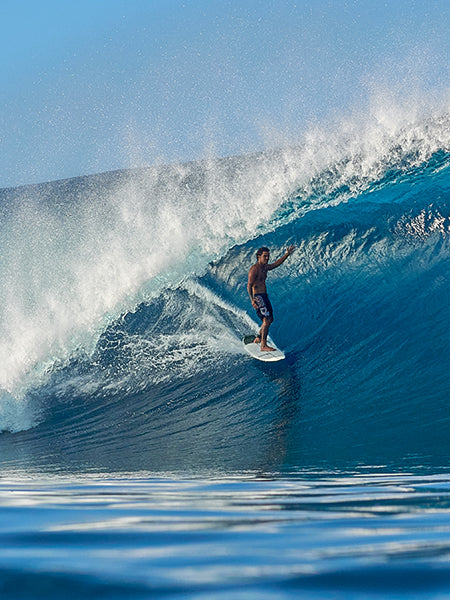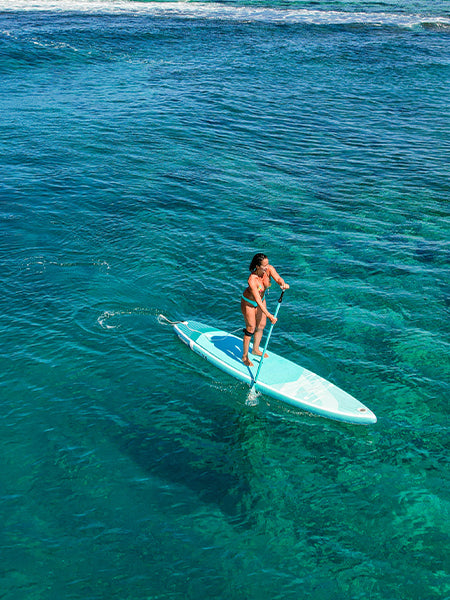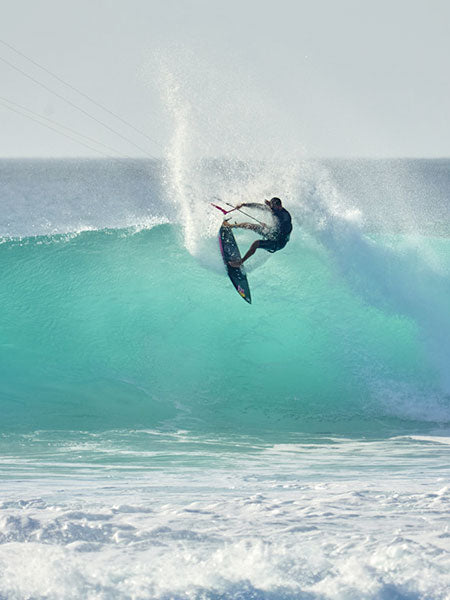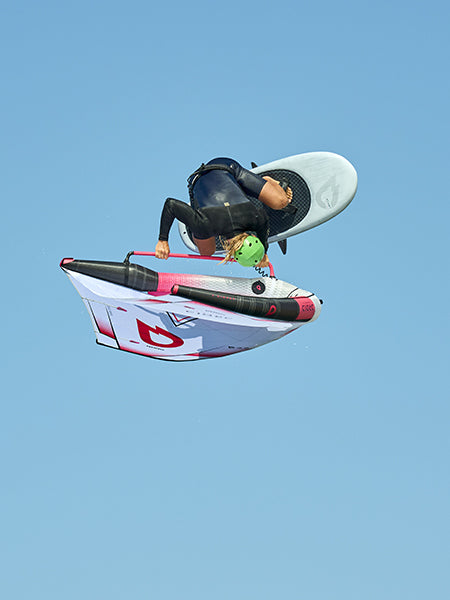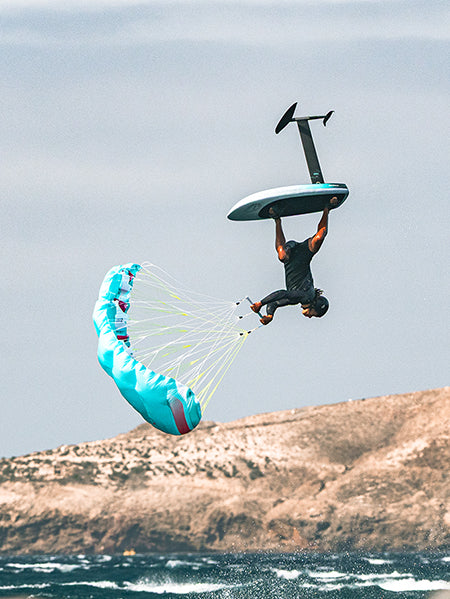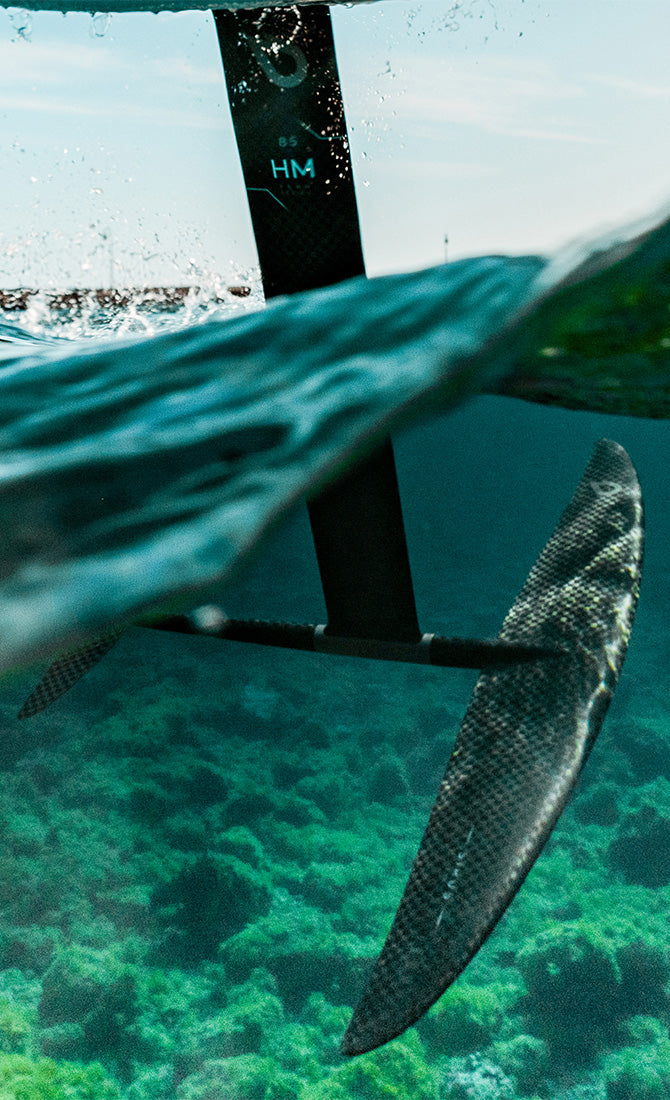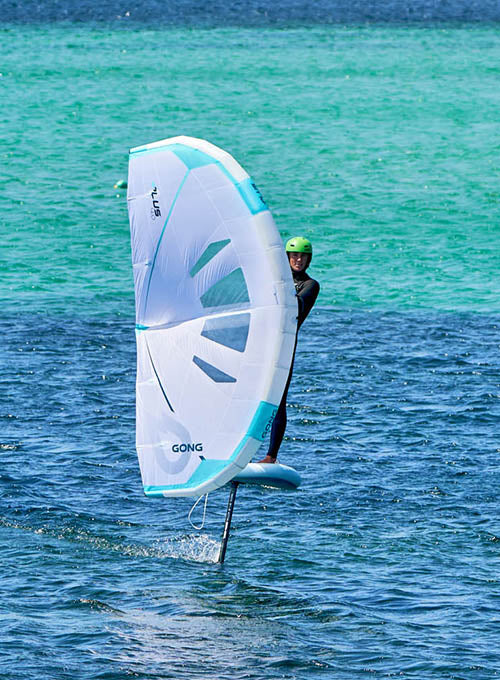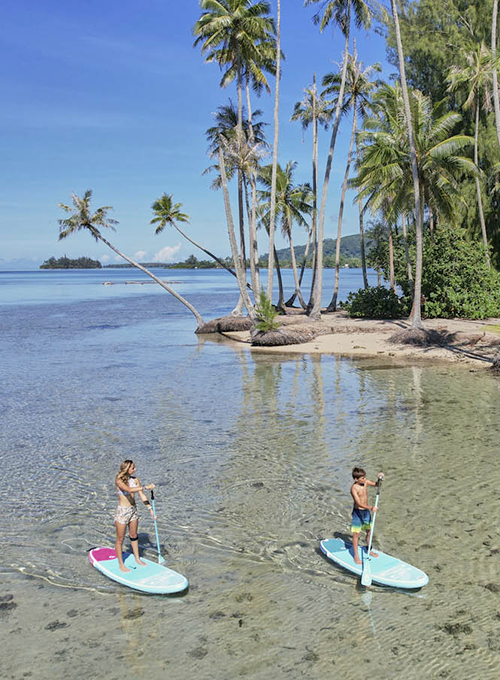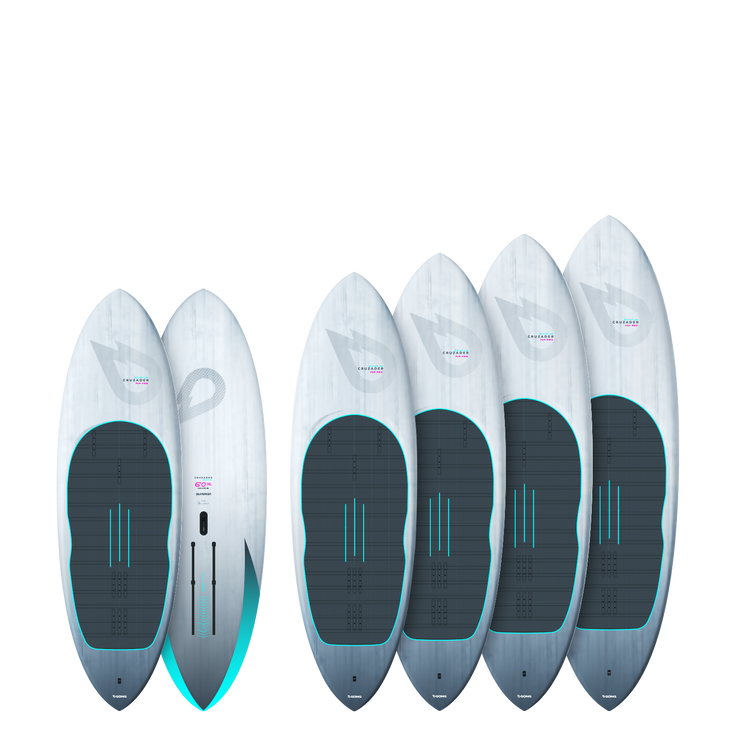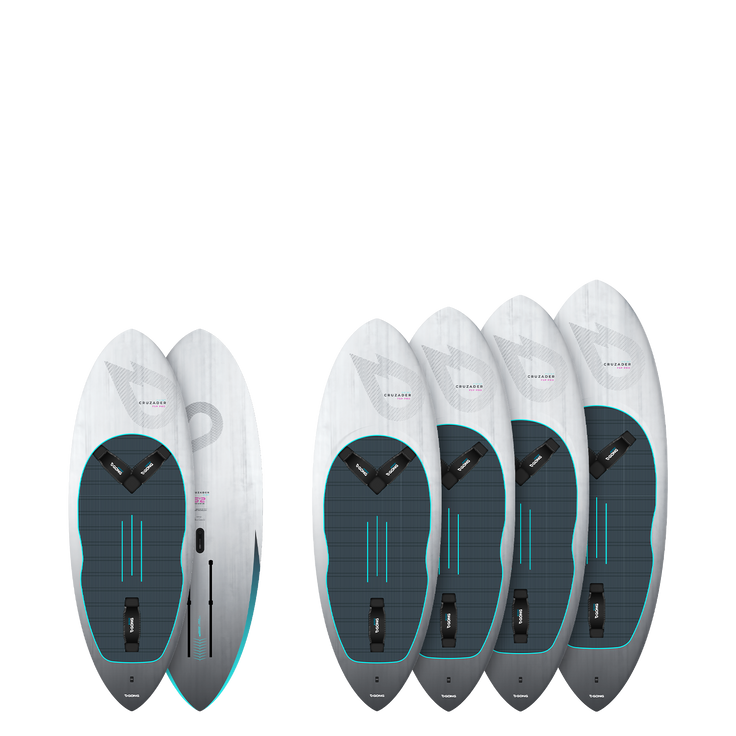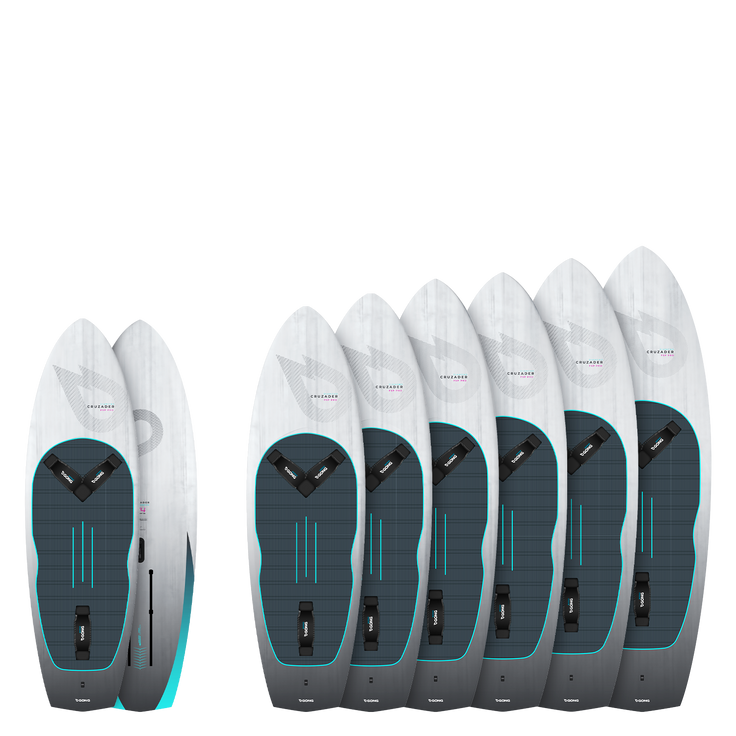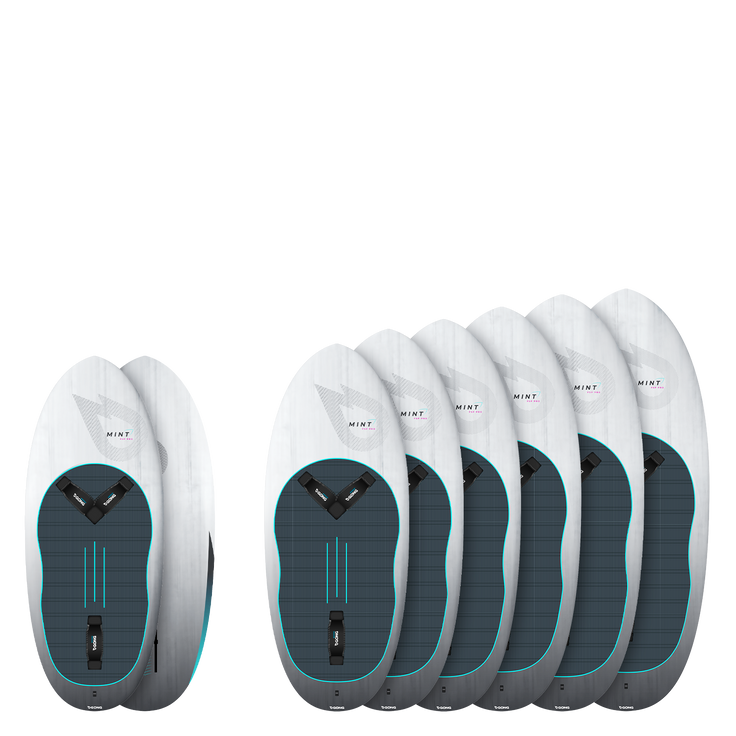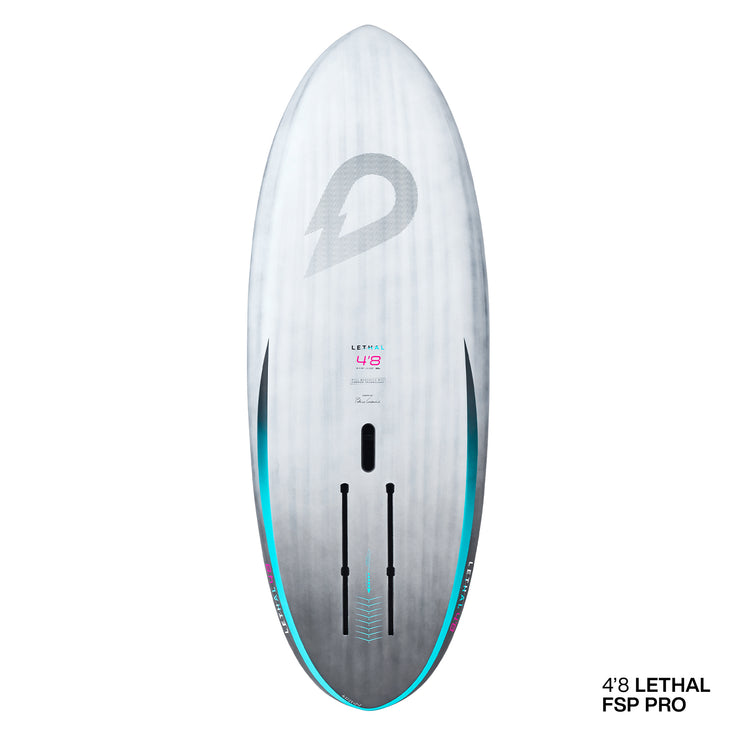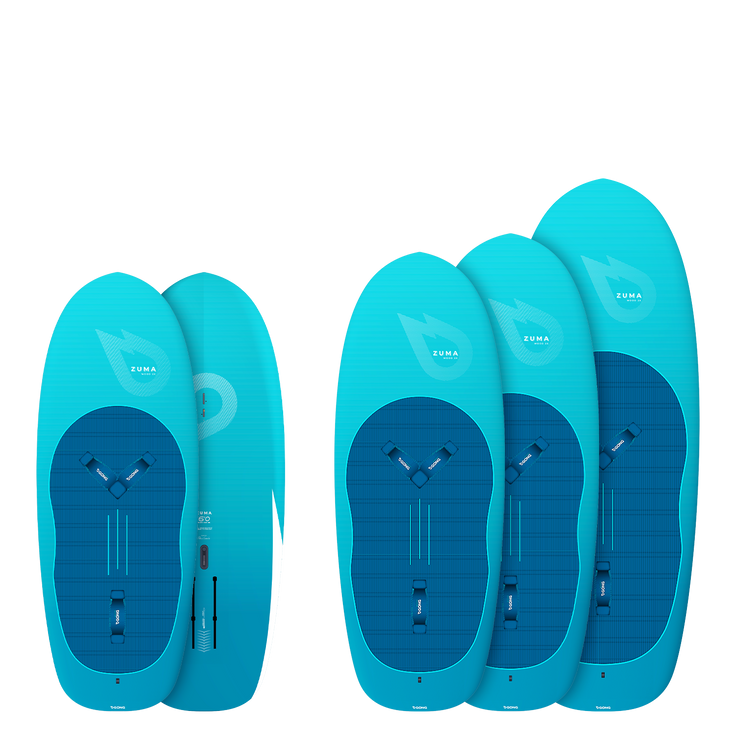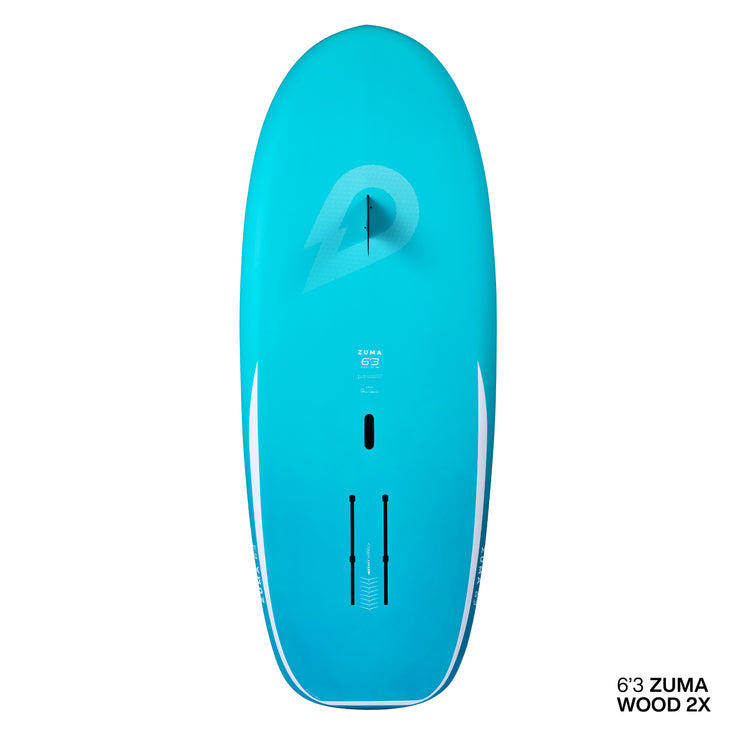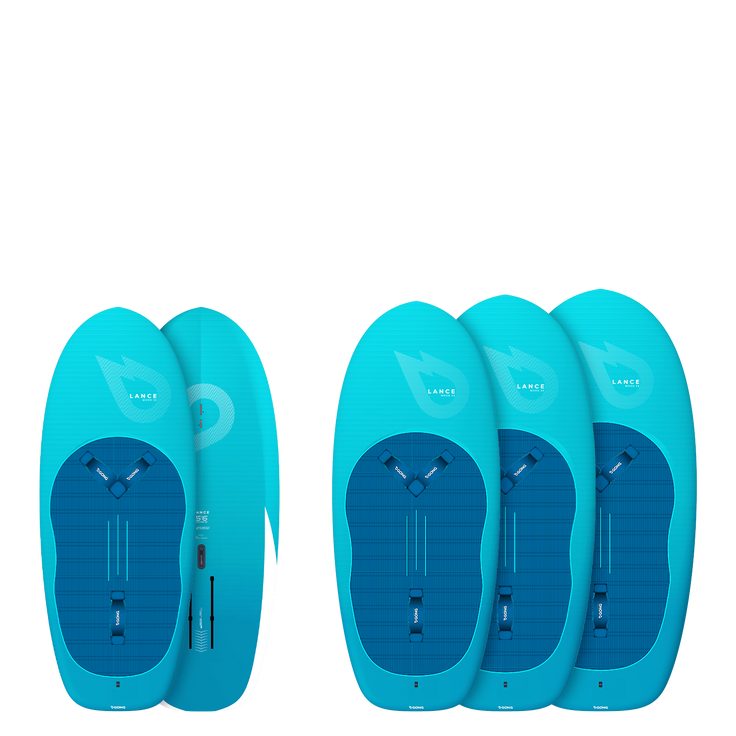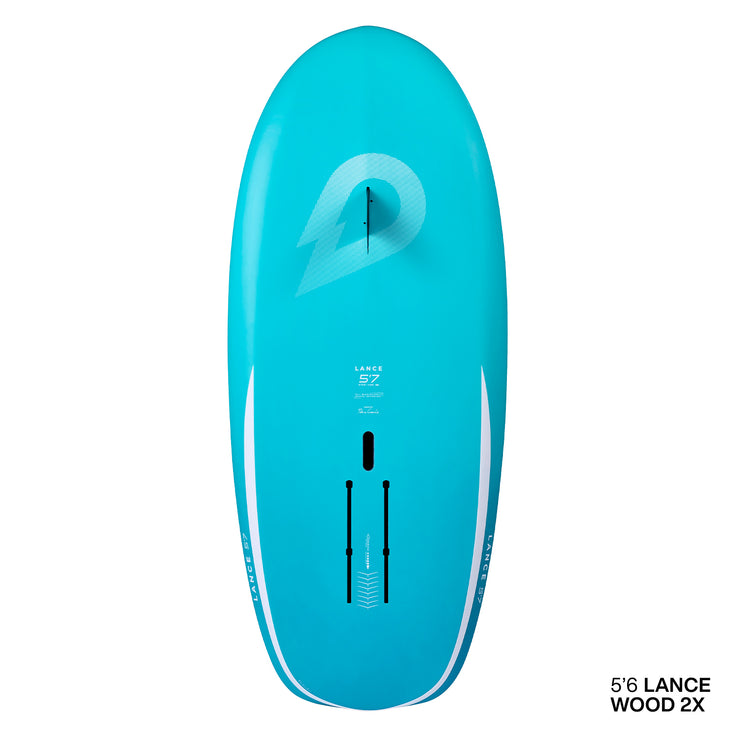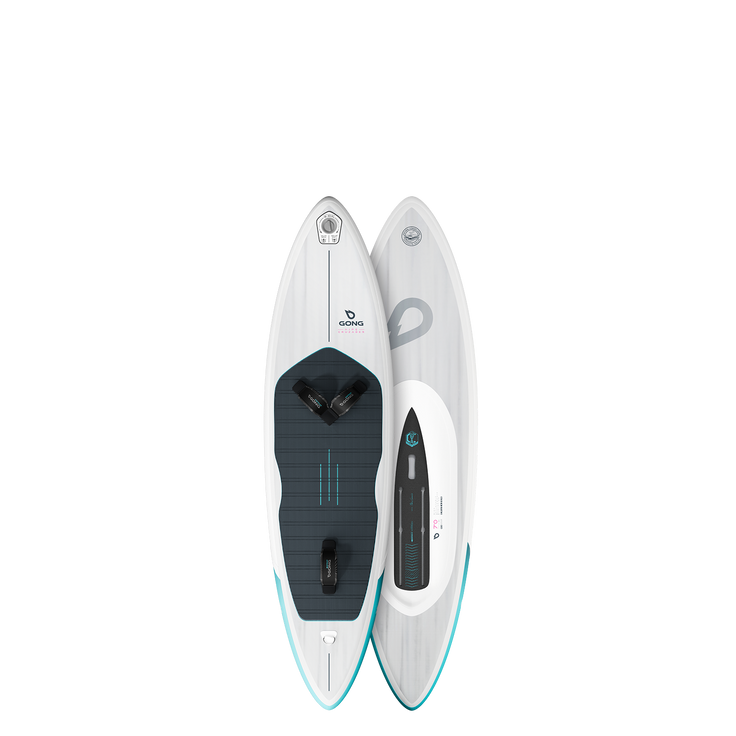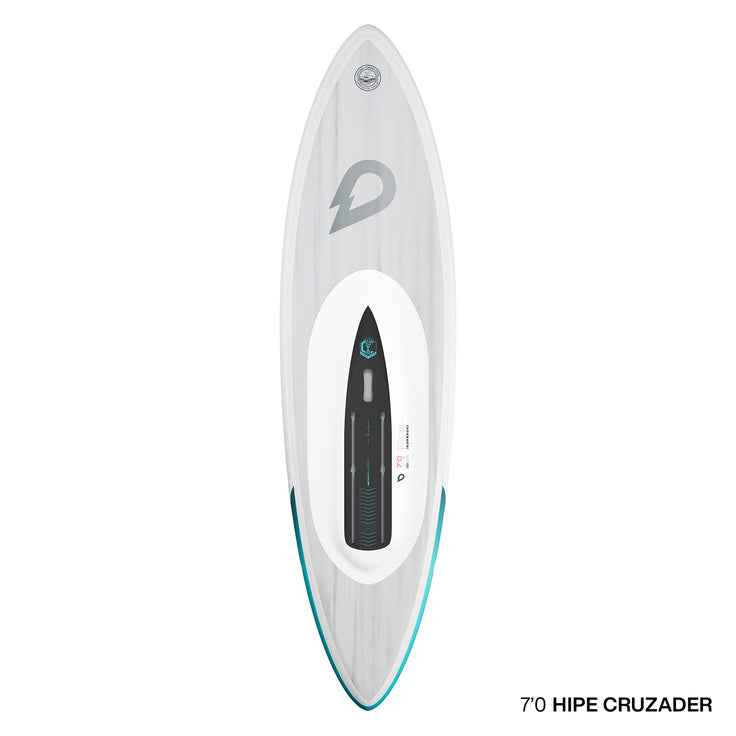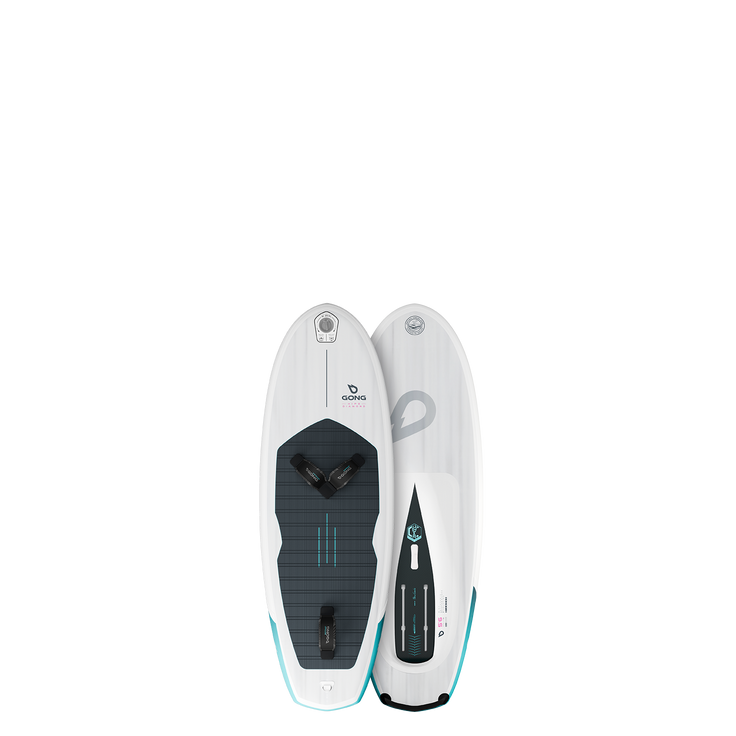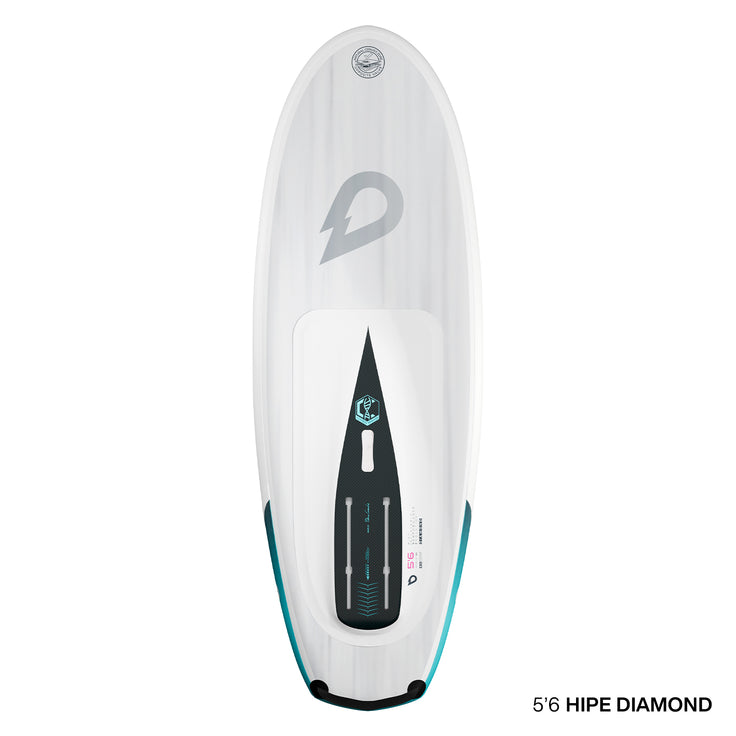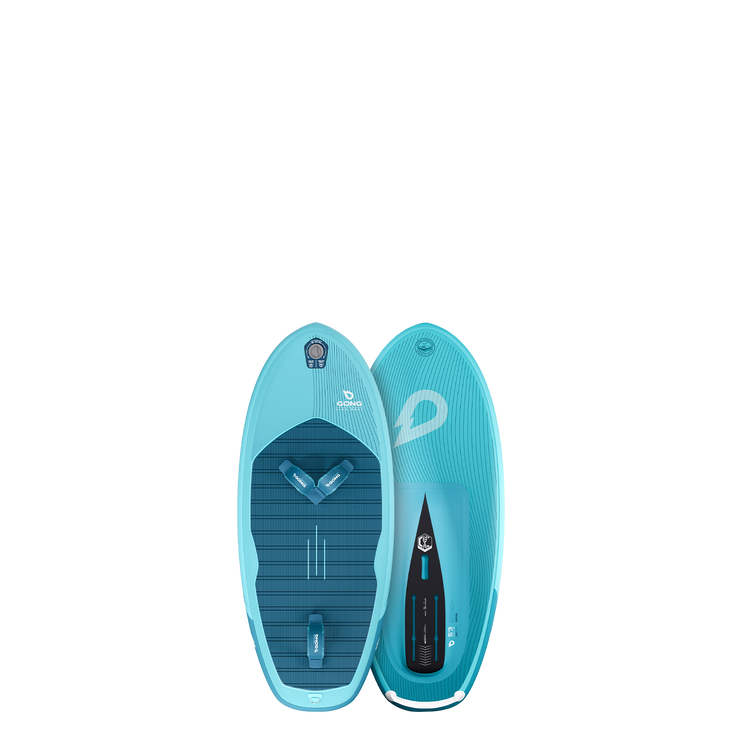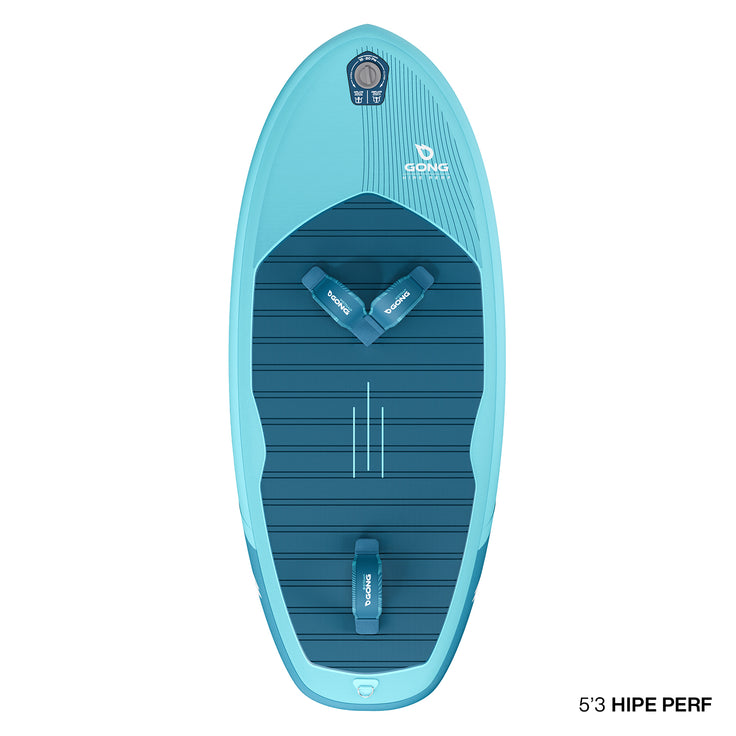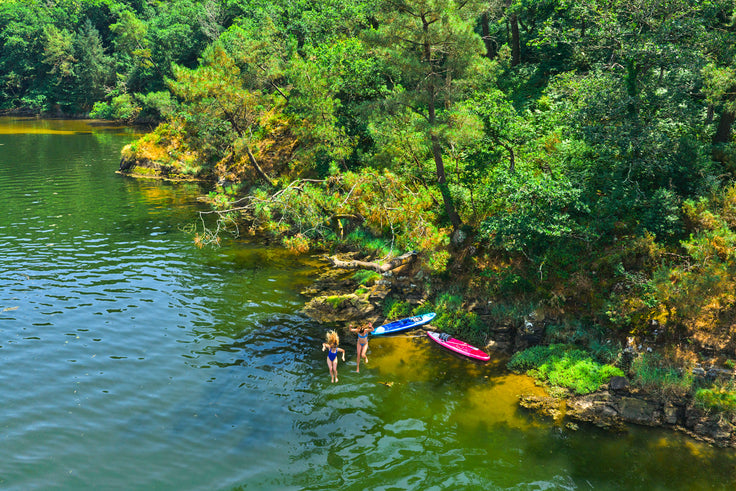GEAR: THE EASIEST BOARDS TO TAKE OFF IN WING FOIL
Identify the key features and boards that make takeoffs effortless.
In this article, we cover:
- The essential qualities a board must have for quick takeoff
- The boards in our range that take off the earliest
Understanding light wind conditions. Let's first agree on what constitutes light wind:
- Under 20 knots for freestyle
- Under 15 knots for beginners
- Under 12 knots with standard equipment
- Under 10 knots for non-champions
- Under 8 knots with specialized gear
- Under 6 knots for champions with top-tier equipment
Ultra light wind is therefore below 6 to 8 knots. It’s a physical challenge just as demanding as strong wind, because we mustn’t forget the huge difference between 6 and 12 knots. Said like that, it may not sound like much, but it’s twice the wind. Put that into perspective with 40 knots, and you’ll see that your ideal gear for 40 knots would be difficult to manage in 20.
So, the perfect setup for 10 knots probably isn’t the one you’ll need to take off in 6 knots. Your technique will be different, your session will be different, because in 6 knots the wind moves more slowly than your own basic movement speed required to take off.
Everything will come down to your ability to create or boost the wind. First by pumping, then by maximizing apparent wind.
As surprising as it may seem, your light wind gear should be the sharpest in your quiver. Go all-in on this combo, and you’ll multiply your good sessions, because riding in 6 to 8 knots is seriously fun, and surprisingly common!
Yes, the average wind speed globally is 8 knots. That sets the stage.
 Wing foiler: Hina, GONG team rider, on her Cruzader Point LW FSP Pro, Neutra, HM85 mast and Veloce setup.
Wing foiler: Hina, GONG team rider, on her Cruzader Point LW FSP Pro, Neutra, HM85 mast and Veloce setup.
The first quality of a board that takes off early: a sleek outline!
To achieve easy takeoffs in light wind conditions with minimal physical effort, you need a long and narrow board:
- A board whose glide allows you to quickly reach your foil's lift-off speed.
The most effective wing boards for this task are mid-length shapes like the Cruzader models, narrow and sleek, as they glide effortlessly on the water. Even the slightest breeze makes them accelerate.
These shapes have reduced width to minimize water resistance, which is compensated by increased length for lift. This concept is taken to the extreme in downwind SUP foil shapes, which are particularly elongated and can take off with just a few paddle strokes or a handful of knots in winging, thanks to their spectacular glide.
To rank boards from easiest to most physically demanding for takeoff, determining the width-to-length ratio is a very reliable indicator. For a volume suited to your size, the lower this ratio (i.e., a sleeker outline), the easier the board will be to take off.
Let's compare this ratio for five boards of equivalent volumes:
- Lemon FSP Pro 5’2: 64.5 cm / 157.5 cm = 0.41
- Mint FSP Pro 5’4: 64 cm / 162.5 cm = 0.39
- Lethal FSP Pro 5’6: 60.5 cm / 167.6 cm = 0.36
- Cruzader Point FSP Pro 5’8: 57 cm / 172.7 cm = 0.33
- Cruzader Point LW FSP Pro 6’3: 46.5 cm / 190.5 cm = 0.24
A simple calculation that, while not an absolute truth, allows for quick comparison. Here, we see a clear advantage of the Cruzader Point LW FSP Pro over the Lemon FSP Pro, which is confirmed on the water. The natural glide of the Point LW allows it to gain speed with the slightest breath of air, effortlessly.

Remember that the outline is paramount in a board's takeoff performance, even though other shape elements like the hull, rails, and tail also play an obvious role. Not to mention the comfort on the board, which greatly affects your ability to take off. We'll discuss this below.
 Wing foiler : Louis, staff GONG, en Cruzader Point LW FSP Pro XL, Droid Boom, mât HM, front wing et stab Veloce.
Wing foiler : Louis, staff GONG, en Cruzader Point LW FSP Pro XL, Droid Boom, mât HM, front wing et stab Veloce.
Volume to stay high on the water
To have no limits in light wind, combining a positive volume of around +20 to 30L with a sleek shape like the Cruzader Point LW is the ultimate solution. A board with a significantly positive volume relative to your weight allows you to be more comfortable and, above all, high on the water, ready to glide and accelerate with the slightest breath of air.
- If you sail exclusively in light wind (e.g., on inland water) or if you opt for an additional board dedicated to light wind, going for a significantly positive volume is recommended.
- If you're looking for an all-purpose board that takes off early, mid-lengths with a volume adjusted to your weight are the ideal compromise.
 Wing foiler: Louis, GONG staff, with the Cruzader Point LW FSP Pro XL, Droid Boom, HM mast, front wing and Veloce stab.
Wing foiler: Louis, GONG staff, with the Cruzader Point LW FSP Pro XL, Droid Boom, HM mast, front wing and Veloce stab.
The most efficient wing foil boards for takeoff
A ranking to be read from the perspective of your skill level. Naturally, you need to feel comfortable on your board to get the best out of it in light wind.
If you're starting out in winging:
- HIPE Learn 8’0 is the inflatable solution for beginners that takes off the earliest because it combines a sleek and very buoyant shape with generous volumes that keep you high on the water. For all non-flying phases, including takeoff, it's the easiest board.
- Zuma is the most efficient rigid board for takeoff because it has a relatively long shape for a multi-sport board, generating a lot of glide. Its glide advantage is particularly appreciated for larger riders and SUP foil / Wing foil versatility.
- Lance is the number one choice for beginners in wing foil because its compact shape offers an ideal compromise between comfort on the water and comfort in flight. Indeed, its shape remains responsive in flight, despite a generous volume that greatly simplifies things during non-flying phases, especially takeoff.
- HIPE First and HIPE Perf, like the Lance, are models praised for their balance between takeoff performance, navigation comfort once you're on the foil, and the immense progression potential they offer.
 Wing foiler: Hina, GONG team rider, on the Zuma Wood 2X, wing Plus Perf Series and X-Over foil.
Wing foiler: Hina, GONG team rider, on the Zuma Wood 2X, wing Plus Perf Series and X-Over foil.
If you're experienced in winging, here's our top 5:
- Cruzader Point LW FSP Pro: The Light Wind version of the Cruzader Point completely changes your perception of ultra-light conditions. In short: there are no more limits! Its length and narrowness, combined with a pointed nose that pierces the water, offer an absolutely impressive ability to accelerate and fly. It's your guarantee of takeoff in all circumstances. Moreover, the very central position on the board gives you a navigation comfort very close to a more compact board, with significantly higher tolerance to touchdowns.
- Cruzader Point LW FSP Pro XL: New XL sizes are available for larger riders and those who want a board dedicated exclusively to light wind (e.g., on inland water) because, as we recall, significant volume and comfort are also considerable assets for takeoff. Let's not forget that sometimes you won't take off again, and you'll still have to return. "Comfort" is therefore an essential point.
- Cruzader Diamond FSP Pro: This shape is a more versatile version of the Point LW with more stability (notably front/back) when not flying. Taking off on a Diamond is also a formality. In winging, it's the freeride board par excellence, and a particularly well-suited board for waves in freefly mode.
- Cruzader Point FSP Pro: It's the mid-length we love for its ability to take off early and its ultra-fun behavior in wave riding. Its very surf-oriented shape promotes fluidity in turns and rail-to-rail transitions.
- Mint FSP Pro / FSP 2X: In the range of so-called "compact" boards bordering on mid-length, the Mint is the one that offers superb glide on the water. Its accelerations are simple and immediate. This best-seller perfectly combines accessibility, performance, and comfort. It gains a spot over the Lethal in this ranking for its comfort in technical conditions.
- Lethal FSP Pro: This flagship model of the range, narrower and sleeker in 2025, displays glide very close to pure mid-lengths. If wave riding is your priority, its shape that allows all daring moves in the waves is an obvious choice. Its ability to take off in a flash between two waves is your escape route in case of a fall.
 Wing foiler: Louis, GONG staff, with the Cruzader Point LW FSP Pro XL, Droid Boom, HM mast, front wing and Veloce stab.
Wing foiler: Louis, GONG staff, with the Cruzader Point LW FSP Pro XL, Droid Boom, HM mast, front wing and Veloce stab.
If you're experienced and ride inflatable boards, here's our top 3:
- HIPE Cruzader is the absolute reference for light wind for wing foilers who have passed the learning stage. Its shape inspired by the rigid Cruzader glides on the water with the slightest breeze. Its low-end range seems to know no limits. You have to experience it to believe it. Its accelerations are spectacular.
- HIPE Diamond ensures glide, responsiveness, and comfort thanks to its pure mid-length shape. A very versatile model in wing foil, top in freeride, and with which you take a lot of pleasure in waves, and even in jumps.
- HIPE Lethal, which, like its rigid version, meets three important criteria in waves: responsiveness in turns, very forgiving to touchdowns, and immediate takeoffs between two sets.
 Wing foiler : Hina, team rider GONG, sur une HIPE Diamond, avec une aile Plus et un foil Curve.
Wing foiler : Hina, team rider GONG, sur une HIPE Diamond, avec une aile Plus et un foil Curve.
What about compact boards?
Compact boards don't necessarily take off much later but do so less through glide and more through pumping on the foil. This simply requires more physical commitment. A freestyler will typically be able to take off a HIPE Stunt, a Stunt, or a Hyperloop in light wind with just a few movements and good coordination.
Moreover, these boards are formidable in repop, which saves you a lot of energy in relaunches.
Discover our complete range of wing boards in our shop.
